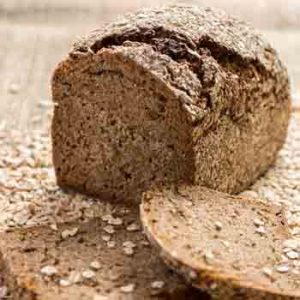
More evidence that low-calorie sweeteners are bad for your health
Studies show that artificial sweeteners can raise the risk of hypertension, metabolic syndrome, type 2 diabetes and heart disease, including stroke.

Natural Health News — Eating bread made from ancient grains could help lower cholesterol and blood glucose levels – leading risk factors for heart attack and stroke – according to new research.
Although the study in the International Journal of Food Sciences and Nutrition doesn’t prove that ancient grains prevent cardiovascular disease (CVD), it does add to increasing evidence that ancient grain varieties may help reduce risk factors for CVD.
Current agricultural practices focus mainly on improving the yield production of wheat. This has led to vast monocultures of only a few high yielding varieties. Valuing yield above all else has also been detrimental to the grain’s nutritional profile.
» Today’s conventional cereal crops are bred to produce high yields – but this comes at a cost to the plant’s nutritional value.
» Italian scientists conducted a small experiment to see if there were any health benefits of bread made from ancient grain varieties versus bread made from conventionally grown wheat.
» Results showed that consuming the the ancient grains bread helped to significantly reduce total cholesterol and low-density lipoprotein (LDL) cholesterol (the ‘harmful’ cholesterol), and levels of blood glucose amongst the study participants.
New interest in ‘old’ grains
Over recent years there has been a surge in the popularity of so-called ‘ancient grains’ which, compared with modern grain varieties which are often heavily refined, offer have antioxidant and anti-inflammatory properties. They also contain more beneficial vitamins (B and E), minerals (e.g., magnesium, iron, potassium), which protect against chronic diseases.
But whether consuming ancient grains, or how they are cultivated (i.e., organic or conventional methods), has an impact on risk factors for CVD is unknown.
In this randomised crossover trial, 45 healthy adults, with an average age of 50, were asked to swap their usual loaf for bread made from ancient and modern grains during three separate interventions each lasting 8 weeks.
In the first phase, participants were randomly assigned to include organically (22 participants) or conventionally cultivated (23) bread made from the ancient grain Verna in their diet. Eight weeks later, all participants were assigned to eat bread made with the modern grain Blasco.
In the third phase, participants were assigned to consume bread made with two different ancient grain varieties (Gentil Rosso and Autonomia B), both conventionally grown. The researchers took blood samples at the start of the study and the end of each intervention to test lipid, cholesterol, and glucose levels as well as other cardiovascular measures.
Both total cholesterol and low-density lipoprotein (LDL) cholesterol (the ‘harmful’ cholesterol), and levels of blood glucose significantly reduced after 2 months of consuming bread made from ancient grains, regardless of whether they are organically or conventionally grown.
In contrast, no significant differences were seen in these measures after eating bread made with modern grains. Moreover, a substantial increase in circulating endothelial progenitor cells, which repair damaged blood vessels, was noted after consuming bread made from the ancient grain Verna.
Growing healthier food
This trial suggests that ancient grains may help reduce some CVD risk factors regardless of how they are cultivated. Because the number of participants was small, however, further larger studies will be needed before any firm conclusions can be drawn about the effects of ancient grains on heart health.
The findings may also convince more growers to grow these ancient grains. That’s good news for our health but also good news for the planet since many ancient grains are unsuitable for a high-input conventional cultivation system.
These grains, which are more suited to organic cultivation – could yield more nutritionally superior cereal products but also encourage more interest in other ‘heritage’ plant crops that have a higher nutritional value than current monocrops.
“We discovered that the organic approach was the only one that could produce old grain varieties,” said study leader Francesco Sofi, associate professor of Nutritional Sciences at University Hospital of Careggi in Florence.
“With a conventional approach these varieties won’t be available. Therefore, while it’s true for grains, it is also true for other foods such as fruit and vegetables.”

Please subscribe me to your newsletter mailing list. I have read the
privacy statement